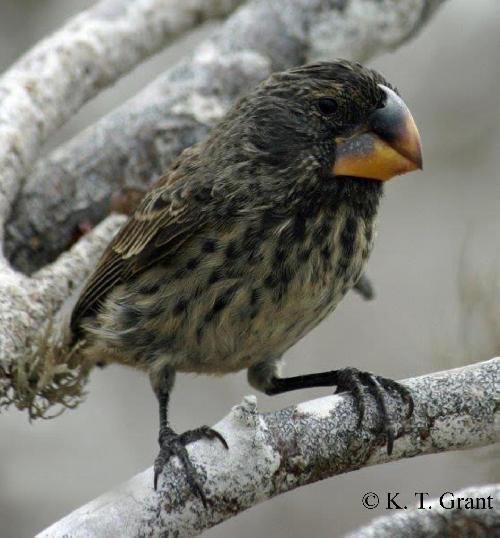Nearly 200 years ago, based on observations of finches in the Galápagos Islands, Charles Darwin proposed that a species may diverge in traits when competing for resources, and now, supporting this concept, a new study identifies the genetic locus that controls changes in beak size of these finches. A recent drought in the Galápagos further revealed this locus's role in beak size adaptation in scenarios when environmental conditions change, forcing species to compete for food differently, for example. The results provide hard evidence for adaptive and selective processes at work in nature, which has otherwise been difficult to obtain. Darwin's adaptive and selective process, now known as ecological character displacement, is highlighted particularly well by the species that inspired its recognition - different sized finches in the Galápagos. Here, Sangeet Lamichhaney and colleagues genetically sequenced six species of Darwin's finches that differ in size and size-related traits: the small, medium, and large ground finches, and the small, medium, and large tree finches. They identified a locus of interest, HMGA2, and confirmed that it is highly associated with beak size, as well as body size, in medium ground finches, a species with considerable diversity in both body and beak size. The researchers then analyzed the genomes of medium ground finches that survived a 2004-2005 drought in the Galápagos, finding that the finches with two sets of the small-beak gene variation of HMGA2 were much more likely to have survived compared to finches with the gene variation associated with larger beak size. The frequency of the small beak variation among those that survived was 61%, compared to 37% in those that died.
 A close up of the large ground finch Geospiza magnirostris that competed for food with the medium ground finch Geospiza fortis, on Daphne Major Island during a severe drought. This material relates to a paper that appeared in the 22 April 2016 issue of Science, published by AAAS. The paper, by S. Lamichhaneyat Uppsala University in Uppsala, Sweden, and colleagues was titled, "A beak size locus in Darwin's finches facilitated character displacement during a drought." Credit: Photo © K. Thalia Grant
A close up of the large ground finch Geospiza magnirostris that competed for food with the medium ground finch Geospiza fortis, on Daphne Major Island during a severe drought. This material relates to a paper that appeared in the 22 April 2016 issue of Science, published by AAAS. The paper, by S. Lamichhaneyat Uppsala University in Uppsala, Sweden, and colleagues was titled, "A beak size locus in Darwin's finches facilitated character displacement during a drought." Credit: Photo © K. Thalia Grant
source: American Association for the Advancement of Science